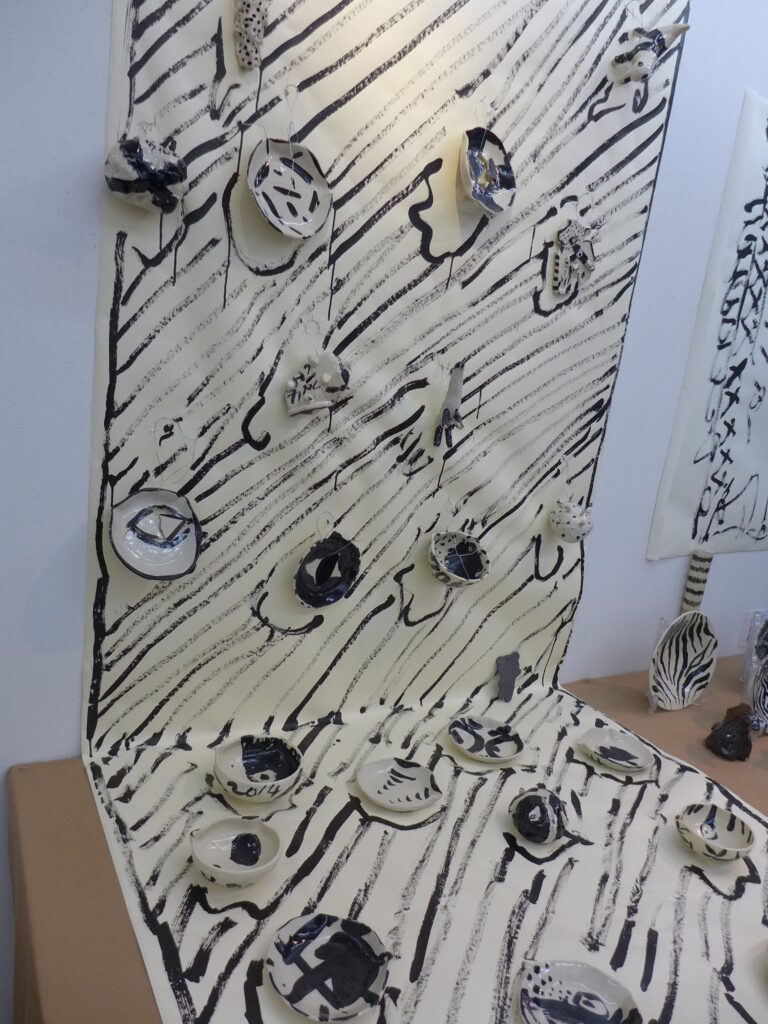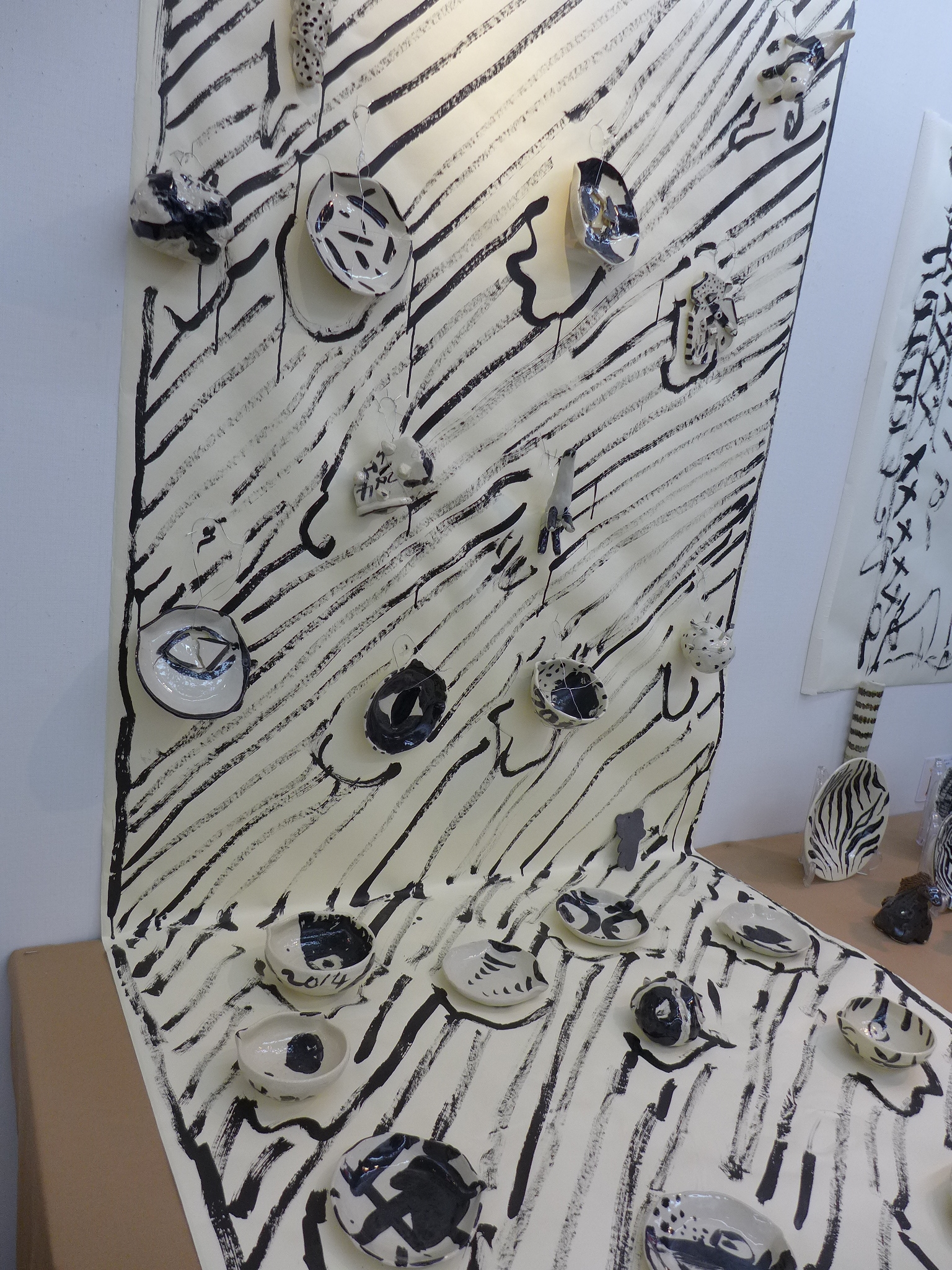Listening to Accomplished People
2003年11月発行海月通信第24号掲載

スポーツ、歌、陶器、ありとあらゆる世界に生きる職業人の中に共通した生き方がある。それを聞いてみると夫々方法は違っていても、一つの自分のやろうとする目的に対して強引に近づけている。自分のみたいもの自分がこうありたいものである。具体的な道具や方法又は時間とか角度とか、僕の場合は現代美術であるが、例えば絵は絵具を使用しないと自分の絵が描けないと思っていた時期があった。ところが何でも使用して、より自分のみたいものいいたいことに近づけていけばいいというようなことである。
18ぐらいの時に絵とは紙やキャンバスにものを写すことが絵を描くことであると思いつづけているところに、ある日、芦屋市展の搬入の時か、村上三郎さんという人にコップが描けなければキャンバスにそのままコップをはりつけてもいい、自分のみたいものが描けなければ、手段は選ばんと直接つけた方が早いというようなことで、いきなり自分のこれまでのキャンバスに描くという概念が、かさぶたの厚いかたまりをはがすようにとられたことを思い出す。その上に絵とは身勝手でいいのだということもききびっくりした。1997年11月14日 MEMOより
Listening to Accomplished People
There is a way of life that is common among professionals in a variety of fields such as sports, music, and ceramics. When you listen to them, even though each of their methods are different, they powerfully pursue one goal that they try to achieve: toward what they want to see and how they want to be. The specific tools, tactics, time, and direction might differ. For me, the field is contemporary art, but there was time when I believed that I could not paint pictures without using paint. However, it is actually about using anything and making it closer to what I want to see and what I want to say.
When I was 18 or so, I kept thinking that painting was to sketch something on paper or a canvas. And one day, I recall it might have been at the installation of the Ashiya City Exhibition, Saburo Murakami told me that even if I couldn’t paint a cup, I could glue a real cup onto the canvas. If you cannot paint something you want to see, you do not need to choose that process; it is faster to do it directly without thinking about one process. Suddenly my previous concept of painting on a canvas was peeled away, just like a thick piece of a scab. Moreover, I was surprised to hear that artwork could be selfish.
November 14, 1997


